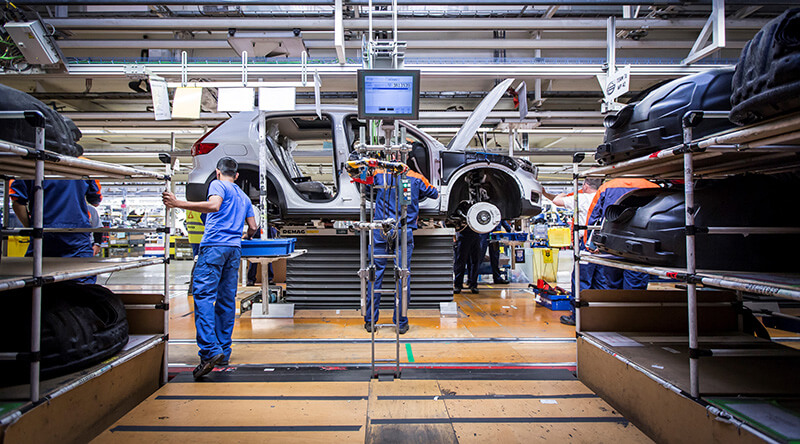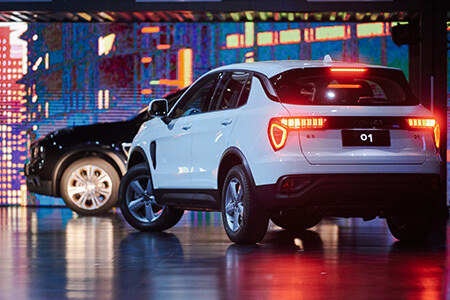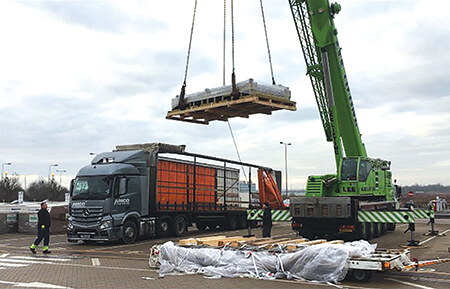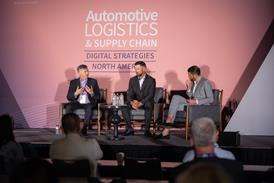 In May, supply chain specialist Kinaxis announced that Volvo Cars had chosen its software for work on volume forecasting and production planning. According to Kinaxis, the Swedish carmaker will use its RapidResponse software to model the impact of rising production volumes, as well as other ‘what-if?’ scenarios.
In May, supply chain specialist Kinaxis announced that Volvo Cars had chosen its software for work on volume forecasting and production planning. According to Kinaxis, the Swedish carmaker will use its RapidResponse software to model the impact of rising production volumes, as well as other ‘what-if?’ scenarios.
Accurate forecasting will be vital for Volvo as it aims to grow and transform its business. In June, the OEM outlined a new strategy that includes ambitious targets for electric cars and autonomous vehicles, as well as a rapid rise in the volumes delivered through subscription contracts rather than sales. Volvo aims to have 5m direct subscribers by the mid-2020s.
The company also expects to cut procurement costs and develop economies of scale via its Polestar electric car spin-off and through its 30% ownership of recently launched sister brand, Lynk & Co.
Of course, Volvo is not alone in these kinds of ambitions. The majority of OEMs have their own plans for electric and autonomous technology, mobility services and increased collaboration. Every carmaker will need to fathom the supply chain implications of its strategy.
Manik Sharma, vice-president for industry strategy and innovation at Kinaxis, argues that the most vital ingredient for supply chain optimisation is the ability to look at multiple constraints concurrently, rather than one after another.
“We have a layer in our software where we can connect data from multiple sources,” he says. “We are not solving the problem sequentially, where you have an engine supply problem, so you solve that, and then you find a wheel and tyre problem, so you solve that, and then the harness is a problem. We don’t do it that way. We are able to see all the points that could be an issue and can rank which is the most critical.”

Other suppliers are hatching their own ways to help OEMs develop the flexible, scalable networks they need. Software provider Llamasoft’s approach involves the creation of a ‘digital twin’, a software model representing suppliers, factories, distribution networks, inventory flows and transport. “You can do all kinds of scenario analysis and ‘what-ifs?’ and really evaluate the interdependencies and the trade-offs that exist across the supply chain,” says Llamasoft CEO, Razat Gaurav (see box below). “You can use optimisation and simulation technologies to see how things will pan out in the real world before you actually implement any changes. Only then, when you’ve got the right answers, do you need to go out into the physical world to implement them.”
Other looming developments in technology are poised to unlock further possibilities in supply chain optimisation. Sharma says Kinaxis aims to create “self-healing” supply chains that spot bad assumptions and correct them, for example. “Everyone is trying to improve data hygiene, but there is still a human element,” he explains. “This is where machine learning can come in.”
Areas of improvementSharma says the first factor Kinaxis has tackled in this way is the modelling of lead times. “Nobody is spending time monitoring and analysing lead times,” he claims. “There are so many players, so many changes, and frankly, it is too overwhelming, so organisations go with rules of thumb – and that’s a source of the fire-fighting supply chains are going through.”
Alternatively, Kinaxis software can monitor trends in actual lead times and correct, or suggest corrections, to improve supply chain arrangements going forward.
Paul Nurse, CEO of logistics software company ProAct International, describes another role for artificial intelligence. “Optimising the supply chain to work in the most efficient way is what systems are fairly good at today,” he argues. “What [they] are not good at is automatically dealing with exceptions and consequences in the supply chain. That’s the trick – that’s the important bit.”
"Optimising the supply chain to work in the most efficient way is what systems are fairly good at today. What [they] are not good at is automatically dealing with exceptions and consequences in the supply chain... That’s the important bit." - Paul Nurse, ProAct International
Nurse says that applying AI decision logic to exception management to guide human managers as they deal with unexpected events will be vital as OEMs adapt their business models.
By contrast, Llamasoft’s Gaurav cautions that the reality of machine learning may fall short of the high expectations which have been prevailing. “There are very many supply chain problems that have nothing to do with machine learning,” he says. “It’s become one of those hyped-up areas.”
Instead, Gaurav suggests that better access to real-time data is more likely to improve the efficiency of supply chains, particularly as Internet of Things (IoT) technology becomes more widespread.
“Network design and policy decisions are based on data, and if you have access to real-time data, then you can more continuously evaluate your strategy, your structure and your policies,” Gaurav notes. “The key will be how you make decisions leveraging that data. Are you going to be able to make more intelligent decisions armed with that data?”
He adds that, while some information may be suited to immediate decision-making, other data will need more careful handling.
"Real-time data includes social sentiment, unstructured data from social media and blogs, and things like that,” Gaurav explains. “Based on those kinds of feeds, and the kinds of insights you can gain, you may decide to change your pricing strategies in a more dynamic way.”
 More collaboration is required to cut empty miles and boost efficiency
More collaboration is required to cut empty miles and boost efficiencyProAct’s Nurse adds that standardisation will be vital to extract full value from real-time data. “It’s a key thing,” he says. “Everybody’s got to understand what data you’re sending to them, what it means and how to interpret it. You don’t want ten different OEMs sending you ten different formats of messages to tell you the same kinds of things.”
Vehicles as a source of dataNurse also notes that cars themselves will soon become key sources of live information.
“Traditionally, carriers and service providers have been the source of information about the vehicle, and one of the issues there is timeliness: some carriers might give information in real time, while others update information once a day or worse,” he says. “As we start to get more information from the vehicle itself – like GPS position, battery charge level and fuel level – that becomes source data for the supply chain.”
Many manufacturers are now building sophisticated sensors, onboard processing and internet connectivity into vehicles for consumer use, so it makes sense to gain insight from these facilities in transit, says Nurse. “We can talk about vehicles understanding their own configurations, so as a vehicle moves through the supply chain it can say, at a particular point, ‘I need to have an upgrade fitted now’,” he suggests.
Ruud Vossebeld, director of business development at optimisation software vendor Inform, notes that live data could transform supply chains in ways that will directly improve the customer experience.
“Customers these days expect to know when a product they’ve ordered will arrive, reasonably accurately, and where it is right now,” Vossebeld observes. “That’s what they see when they go to Amazon.”
He acknowledges that, for most carmakers, this type of transparency will be difficult to achieve. But he believes it is a challenge that OEMs must face. “When, one day, Amazon can deliver [a new car] within a week and the car industry still needs several months without any visibility, then I imagine they will get into trouble,” he comments.
Vossebeld adds that artificial intelligence technology will help simplify and speed up distribution, aiding manufacturers as they try to improve order visibility.
“Wherever you currently need inspectors, in the future you might use cameras and automatic detection,” he notes. “Software can quantify how severe damage is, filter which cars might need to be checked by a person and – within the right cost threshold – automatically send cars for repair.”
[mpu_ad]Vossebeld says he is aware of intelligent systems in use today which check cars for damage by hail. He adds that Inform’s role would be to co-ordinate such systems. “We work with some of the largest car terminals in the world and some of them have more than 50,000 cars standing in the park area,” he notes. “Our system can store all the photos, update the damage tables, generate alerts and explain to the people who will repair the damage which cars need to be repaired and what needs to be done.”
Autonomous distributionLike Nurse, Vossebeld foresees big advantages looming as cars get smarter. “Imagine that every car is self-driving in ten years’ time,” he suggests. “How many people do you still need in a big car terminal if a car can move around the compound by itself, take itself to the repair centre or park itself ready for transport? That could be a big, big change.”
A truly autonomous car could even drive itself from the factory to its new owner’s address. “You just have to consider the obvious thing,” Nurse cautions. “Is the customer going to accept a car that arrives with 1,000 miles on the clock?”
As Nurse observes, delivery mileage would cease to be a concern if the car were destined to join an on-demand, shared mobility service, however. “Ultimately, the usage model will change the supply chain,” he says.
For now, delivery trucks remain the bedrock of both parts and finished vehicle delivery. And optimisation of shipping will become increasing important, Vossebeld predicts.
“The cost for the truck and the driver is getting higher and higher and I think that will get a lot of attention in the next five years,” he says. “In some parts of the world, trucks are empty around 40% of the time.”
 "The cost for the truck and the driver is getting higher and higher and I think that will get a lot of attention in the next five years. In some parts of the world, trucks are empty around 40% of the time." - Ruud Vossebeld, Inform
"The cost for the truck and the driver is getting higher and higher and I think that will get a lot of attention in the next five years. In some parts of the world, trucks are empty around 40% of the time." - Ruud Vossebeld, Inform
Filling trucks both to and from a factory can be tricky to arrange, but Vossebeld says car companies must think outside their own box. “I’ve seen some large companies, outside automotive, that have done everything internally to optimise their supply chain and their task now is to find five to ten partnerships with other companies to help them reach the next level of efficiency.”
While your own operations may only require trucks to go from A to B, the chances are very high that another business will need to ship from B to A. “I think that’s where the automotive industry needs to go, to take a harder look around for who you might collaborate with,” Vossebeld says.
Again, innovative software might help. How long can it be before online matchmaking sites emerge to hook up lonely distribution networks with suitable partners?
 You joined Llamasoft as CEO in April 2018, replacing co-founder Don Hicks, who remains as chairman of the board. Why did Llamasoft need a new CEO?Llamasoft grew from a start-up fairly rapidly and in the next phase it’s important that we grow the business on a foundation that will allow us to scale across different regions. What I bring to the table is my domain knowledge in the supply chain, my experience running and scaling large organisations, and doing so not just across North America but around the world.
You joined Llamasoft as CEO in April 2018, replacing co-founder Don Hicks, who remains as chairman of the board. Why did Llamasoft need a new CEO?Llamasoft grew from a start-up fairly rapidly and in the next phase it’s important that we grow the business on a foundation that will allow us to scale across different regions. What I bring to the table is my domain knowledge in the supply chain, my experience running and scaling large organisations, and doing so not just across North America but around the world.
I’ve been in the supply chain space for about 23 years. I’ve managed businesses in North America, lived in the UK and run an EMEA [Europe, Middle East and Africa] business in the past, and also managed across Latin America and Asia Pacific as well.
How would you describe Llamasoft’s offering?We help companies rethink the strategy, structure and policies around their supply chain, and we allow them to do that in a very safe, non-intrusive environment by creating a digital version of their supply chain.
Around the world, in any industry you pick, there’s a lot of change, and yet this is an area where the largest supply chain and ERP companies have not really focused. They’ve prioritised operational planning and execution. In my view, that’s not sufficient. If your supply chain is not designed correctly, it doesn’t matter how well you plan and execute.
We have a strong product and some really smart people. Supply chains are going to be more and more influenced by mathematics, and we’ve got over 30 PhDs writing algorithms to solve some of the most complex supply chain issues. That sort of chutzpah doesn’t exist in any other supply chain software company.
Then there’s the potential for growth. We’ve got about 650 customers, including very large companies like GM, Ford and Fiat Chrysler in automotive, as well as brands like Unilever, Wal-Mart, Ikea and Argos. Most use our products in a fairly limited fashion, so there’s a big opportunity to grow just within our existing base. We’ve also done a detailed bottom-up analysis and there are about 5,000 companies we could be working with just in North America and western Europe. So the potential for new accounts is tremendous.
Does that mean you see North America and western Europe as the engines of Llamasoft’s growth?The key thing for us is to prioritise and make sure we don’t stretch ourselves too thin. We’re going to be very strategic about where we make investments, scale the business, gain critical mass and then move on to other regions. Clearly, we have a strong presence in western Europe and North America. We have a big presence in the UK and have just made a huge investment in the DACH countries (Germany, Austria and Switzerland). We have offices in Shanghai and Tokyo and are looking to open in Singapore as well, so Asia Pacific provides significant opportunities for growth. We have a good presence in Latin America, especially in Mexico and in Brazil, so there’s no shortage of opportunities for international expansion.
Are you planning to earn more from services as Llamasoft grows, or remain a sofware-focused business?About 75% of our revenue comes from software subscriptions and 25% from professional services, and I think in the short term, that mix will remain. Two to three years out, it may go to 80:20. We have partnerships with most of the major consulting firms, from companies like McKinsey and Boston Consulting Group to large systems integrators like Accenture, as well as very specific supply chain-focused companies like Miebach and Chainalytics. It’s our strategy to continue working with our partners, while maintaining a good professional services capability in-house.
Llamasoft serves many different industries. What lessons can the automotive sector learn from supply chain innovation in other industries?The automotive sector has finessed certain aspects but still has things to learn in other areas. It has been a leader in shifting from a region or country-specific supply chain to a global basis. A lot of automotive OEMs began sourcing components from low-cost countries before many other industries. And automotive supply chains deal with a very complex bill of materials, if you think about the number of parts that go into a single vehicle and having them all come together on a just-in-time basis.
Automotive OEMs have been very good at keeping their own inventories lean on the components side.
Where I think automotive companies can learn from other industries is on the outbound side – from manufacturing into the dealer network and on to the consumer. I think they could learn a lot from retailers and consumer product companies in terms of how to manage outbound logistics, transportation costs and how to plan and allocate inventories, based on geographical differences in consumer preferences.
Another aspect is how to manage inventories of spare parts. And that’s a very complex business for automotive OEMs because the mean time to failure governs the inventories they need to carry for all the previous models they have, with a demand pattern that can be very erratic. It’s a difficult problem to solve, but some of the aerospace companies have done a good job.
Finally, consumer preferences are changing, given the views of millennials about whether to own something or use it on demand. Automotive companies will need to get closer to consumers, understand their behaviour and really adapt their business models to those changing consumer preferences.
"Automotive OEMs have been very good at keeping their own inventories lean on the components side. Where I think automotive companies can learn from other industries is on the outbound side – from manufacturing into the dealer network and on to the consumer." - Razat Gaurav, Llamasoft













































